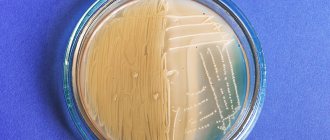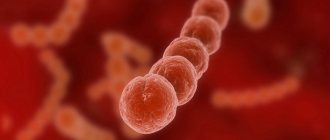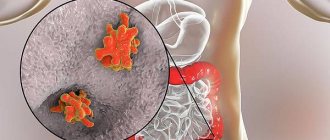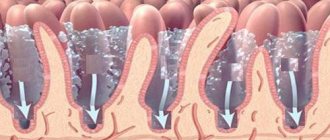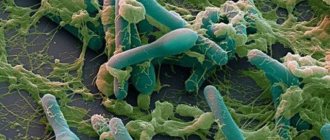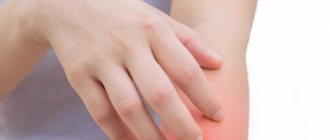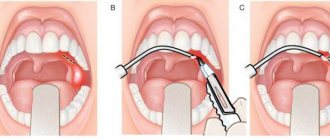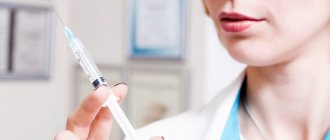Streptococcus viridans is part of the natural human microflora. The microbe lives on the mucous membrane of the respiratory, digestive and urogenital tracts. Normally, its amount should not exceed 30% of the number of all microorganisms inhabiting these loci.
Bacteria are ubiquitous. In their normal state they are not dangerous to humans. Suppression of immune defense is the reason for the active reproduction of Streptococcus viridans and its acquisition of pathogenic properties. The microbe causes local inflammation and destruction of the cells of the mucous membrane lining the respiratory, digestive and urinary organs. Over time, the pathogenic streptococcus leaves its “territory”. It penetrates the blood and spreads throughout the body, causing severe illnesses that lead to disability of patients and even death.
Streptococcus viridans means green in Latin. This name is associated with the ability of bacteria to produce a green color during hemolysis. A microbe can be detected in biological material using bacteriological testing or PCR. Treatment of infection is etiotropic, pathogenetic, symptomatic. Patients are prescribed penicillins, immunomodulators and drugs that eliminate clinical manifestations and improve the general condition of patients.
Etiology
Streptococcus viridans under a microscope
Streptococcus viridans are asporogenous spherical or ovoid cocci lacking flagella. They form a capsule that protects them from phagocytes, and under certain conditions they transform into the L-form, which allows them to hide from components of the immune system.
The bacteria are Gram stained blue and are arranged in chains in the smear. They are very picky about growth conditions. For inoculation, media with blood or serum are used - blood or serum agar. On solid nutrient media, very small, grayish colonies grow with a zone of green hemolysis along the periphery. In liquid media they form diffuse turbidity with sediment at the bottom.
Streptococci are able to carry out their life processes both in the presence of oxygen and without it. The bacteria are resistant to optochin and insoluble in bile. Streptococcus viridans is resistant to some environmental factors - drying, heating, cooling, freezing. Microbes die during boiling and disinfection, but not immediately, but after 15-30 minutes. Being in the external environment for a long time, they lose their pathogenicity.
Streptococcus viridans is considered a weakly virulent microbe. This is due to a limited set of pathogenicity factors, which include the capsule, adhesin proteins, endotoxin, hemolysins and enzymes that ensure the development of the pathological process.
What is streptococcus Streptococcus viridans
Low pathogenic bacteria of the viridans type belong to the family of streptococci - symbiotic living organisms present on the mucous membrane of the human oropharynx.
The number of bacterial colonies normally should not exceed 50% of the total microflora (non-pathogenic) of the locus. The bacterium received its Latin name “Streptococcus viridans” due to the green color it acquires during hemolysis (the process of releasing hemoglobin from red blood cells).
Representatives of streptococci can also be found in the natural environment, but they are not dangerous for a relatively healthy person.
The threat appears with the development of immunodeficiency conditions, when aerobic organisms cause serious diseases of the throat (pharyngitis), lungs (pneumonia), and skin infections. Viridans microbes most often affect the respiratory organs of children; in adults, similar pathologies are diagnosed less frequently.
Streptococcus viridans are a type of protozoan gram-positive bacteria that turn blue-violet when stained with Gram.
In addition to the pharynx and oral cavity, the respiratory organs, gastrointestinal tract, and genitourinary system are inseminated with bacteria. Viridans enters the body with food, and after dental or surgical treatment, the bacilli may end up in the general bloodstream.
Depending on the type of hemolysis caused by the destruction of red blood cells, streptococci are divided into three main types (according to the Brown classification):
- alpha bacteria - the presence of greening individuals triggers an incomplete type of hemolysis;
- beta bacteria are pathogens that promote complete hemolysis;
- Gama bacteria are streptococci of a non-hemolytic (break into two different atoms) species.
Visually, microorganisms resemble a motionless chain consisting of individual balls. Each individual that does not have flagella is enclosed in a capsule that reliably protects against attack by phagocytes. Streptococci do not require oxygen to live and reproduce; under special conditions, they are able to transform (L-form) in order to hide from agents of the immune system.
Streptococci and staphylococci: what is the difference
Both types of gram-positive bacteria belong to the coccus group. Immobile microorganisms of the same size have a spherical shape, are not prone to forming spores, survive in acidic environments, and reproduce by binary fission.
Both types of normal human microbiota have the ability to resist a large number of antibiotics and poison the host’s blood with their own toxins.
Streptococcus viridans in the throat of a child, found in a smear, is a signal of a pathogenic process that the agents of the child’s immunity cannot cope with. Despite some similarities, streptococcal and staphylococcal microorganisms have a number of main differences.
| Streptococcus | Staphylococcus |
| Ball-like elements are grouped by chains of regular shape. | Produced in bunches similar to grape clusters. |
| Binary type of division along one axis (linear). | Binary type of division along different axes (several directions). |
| About 50 species can be found on the mucous membrane of the respiratory tract. | About 40 species settle on the skin. |
| There are 3 types of hemolysis - alpha, beta, and gamma. | In the absence of hemolysis, its gamma form is sometimes manifested. |
| Signaled by a sore throat, the most common diseases are scarlet fever, signs of toxic shock. | Signal skin diseases, food poisoning, bacterial conjunctivitis. |
The pathogenicity and viability of Streptococcus viridans persists for a long time in environmental conditions, since the bacteria are not afraid of temperature changes and lack of moisture. Boiling or treating the surface with a disinfectant solution will help get rid of pathogens. In the case of active colonization of the mucous membranes, their cells suffer from inflammation and destructive changes.
Norm of streptococci in a smear
To make a correct diagnosis and prescribe a specific antibacterial drug, it is necessary to recognize the type of pathogen and determine the degree of its sensitivity to the selected antibiotic. In order to get the desired result from therapy, a smear is taken from the throat of an infected child, then the material is subjected to cultural examination under a microscope.
Streptococcus viridans
There is no precisely established norm of streptococci in a throat smear. The indicator is considered relative due to the individuality of each patient’s immune system and the characteristics of its microflora.
Therefore, to determine the norm, an average value is used, which is the same for all age groups and is equal to 103 CFU/ml. This means that 1 ml of biomaterial should not contain more than 1000 Streptococcus colonies. Exceeding the limit norm (above 105) indicates the development of a bacterial infection.
Streptococcus viridans may be present in a child’s throat without the presence of characteristic symptoms of infection. It should be noted that therapy is not needed in this situation, but the child becomes a carrier of the pathogen and can infect other children.
Epidemiology
Streptococcus viridans in a certain concentration is not dangerous to humans. Rather, on the contrary, bacteria prevent the invasion of other pathogens and protect the human body from dangerous microbes such as Pseudomonas.
When the number of streptococci begins to grow rapidly, pathology occurs. Replenishment of streptococcus is also possible from the outside - from sick people, especially with respiratory forms of the disease, as well as from asymptomatic bacteria carriers. Patients with respiratory disease constantly release microbes into the environment.
Sources of infection can be your own foci - inflamed sinuses or carious teeth. Mucus from the nose, flowing down the back wall of the throat, periodically causes inflammation of the throat and tonsils.
Ways of spread of infection:
- Aeration - when swallowing air containing microbes,
- Contact, including sexual - with a kiss, hug, coitus,
- Nutritional - when consuming infected food products: eggs, milk, ham,
- Transplacental - intrauterine infection of the fetus.
People's susceptibility to streptococcal infection is quite high. The disease is characterized by autumn-winter seasonality. The microbe primarily affects young children and the elderly.
Factors contributing to the development of pathology:
- Immunodeficiency,
- Post-acute ARVI,
- Hypothermia,
- Contact with a sick person
- Oncopathology,
- Long-term immunosuppression
- Concomitant chronic diseases in the stage of decompensation.
After the introduction of Streptococcus viridans into the human body, local inflammatory processes develop and the primary lesion forms. This microbe has a tropism for the epithelium of the respiratory tract, so most often the place of its localization is the upper respiratory tract. In more rare cases, the organs of the urinary and digestive systems become inflamed. Bacteria actively multiply in epithelial cells. When their number becomes prohibitive, streptococci break into the bloodstream and spread to the internal organs.
Streptococcus viridans can cause severe intoxication with dyspepsia and confusion. The cell wall of bacteria is perceived by the body as an allergen, to which autoantibodies and hypersensitivity are produced. Allergization of the body occurs, autoimmune processes develop in the form of glomerulonephritis, myocarditis, and rheumatism. Despite its low virulence, Streptococcus viridans is able to penetrate through the bloodstream even into sterile environments - cerebrospinal fluid, urine.
Diseases caused by Streptococcus viridans:
- Demineralization and destruction of hard tooth tissues with the formation of a cavity defect,
- Inflammation of periodontal tissues,
- Tonsillitis, pharyngitis,
- Otitis,
- Inflammation of the renal glomeruli,
- Urethritis,
- Cervicitis,
- Inflammation of lymph nodes, muscles, skin,
- Endocarditis.
Streptococcal infections and the role of healthy microflora in their prevention
Theodor Billroth and the equally famous French chemist and microbiologist were the first to encounter these bacteria that parasitize humans . The first discovered them in 1874, when he was treating erysipelas, the second - several years later when examining patients with purulent diseases and sepsis. Over time, it became clear that these microorganisms also live in animal bodies and represent a whole family that has one thing in common: they provoke various diseases.
Symptoms
Streptococcus viridans usually causes diseases of the upper respiratory tract. In a child, this microbe is found in the throat and becomes the causative agent of pharyngitis or sore throat. Against the background of a pronounced intoxication syndrome with fever, malaise and apathy, a sore throat, nausea, and hoarseness appears. Sick children are often capricious, cry, refuse to eat, and do not breastfeed. They develop yellow-green nasal discharge, cough, and headache.
Upon examination, specialists detect hyperemic mucous membrane of the pharynx, swelling and hypertrophy of the tonsils. In patients, the face becomes puffy, regional lymphadenitis occurs, a pustular rash appears on the skin, myalgia, arthralgia, hyperhidrosis.
Complications of diseases caused by Streptococcus viridans:
- Acute otitis media,
- Rheumatism,
- Myocardial inflammation
- Glomerulonephritis,
- Bacterial inflammation of the meninges,
- Abscesses of parenchymal organs,
- Sepsis,
- Shock.
The pathogenesis of such complications is not fully known. Their cause is considered to be autoimmune inflammation: antibodies produced to fight infection react to their own cells affected by streptococcus.
Laboratory research methods
Diagnosis of diseases caused by Streptococcus viridans involves conducting a microbiological examination of clinical material and performing a polymerase chain reaction. Laboratory diagnostics begins with the selection of material. Microbiologists examine a swab from the throat and tonsils, nasal discharge, vaginal secretions, scrapings from the affected area of the skin, blood, urine, sputum, and cerebrospinal fluid.
Bacteriological examination is a “classic” in the diagnosis of infectious diseases. The selected material in sterile tubes or containers is delivered to a microbiological laboratory for pathogen isolation. It is inoculated on blood agar and one of the accumulation media - sugar or whey broth. After daily incubation, the results are taken into account. Microscopy of grown colonies reveals blue cocci arranged in chains. Of particular interest are colonies with a zone of greening hemolysis. They contain pathogenic microorganisms. Colonies with hemolysis are counted and the degree of microbial contamination is determined. After identifying the biochemical and antigenic properties, a conclusion is made about whether the microbe belongs to the species Streptococcus viridans and its quantity is compared with the maximum permissible. Normally, streptococcus viridans should not exceed 10 to 4 microbial cells. When the number of microorganisms in the pharynx is 10 to 5 degrees or more, they speak of its etiological role in the development of this disease. For clinicians, not only the type and quantity of the pathogen is important, but also its sensitivity to antibacterial drugs. To determine it, a special test is performed with a set of antibiotics from different groups.
PCR diagnostics is a modern method that allows one to detect an infection by isolating the genetic material of the pathogen. This rapid test provides accurate results in minutes. But according to modern standards, patients need to undergo a comprehensive examination, which takes a little longer, but gives a more reliable result. Since Streptococcus viridans is a normal inhabitant of the human body, it can also be detected in healthy people using PCR. That is why this method is not universal.
Additional studies include paraclinical blood and urine tests, ECG, and ultrasound of internal organs. These studies are necessary to determine the condition of the heart and kidneys. Very often, streptococcus spreads hematogenously from foci located in the glomerular formations or the valve apparatus.
Diagnostics
The peculiarity of microorganisms is that they populate not only sputum and mucous membranes, but also venous blood and urine, which determines the location of the infectious process. To assess the general condition of the respiratory tract, it is necessary to go through the stages of a bacteriological examination, which is prescribed by an ENT doctor.
| Type of biomaterial | Where do they get it from and why? |
| Smear | The material is taken from the suspected site of infection. If it is the pharynx - from the surface of the throat and tonsils, from the pharynx cavity. The nasal mucosa is checked in case of suspected sinusitis or sinusitis. |
| Blood | In the general analysis, two indicators are important - the leukocyte formula and ESR (erythrocyte sedimentation rate). Their values determine the inflammatory process, and an increased level of hemoglobin indirectly confirms the presence of streptococcal infection. Serological serum test allows you to clarify the characteristics of the pathogen (qualitative, quantitative). |
| Sputum | Culture is relevant if bronchitis or pneumonia is suspected. |
Additional examination methods include ultrasound diagnostics of internal organs, X-ray of the lungs, and ECG of the heart. In case of purulent lesions of the skin, a biopsy specimen (scraping) is taken from the affected area to develop clear therapeutic tactics. Research is needed to clarify the location of viridans and select the correct therapeutic tactics.
General therapeutic measures
Streptococcal infection is dangerous due to its complications, so its treatment should be started immediately. Treatment of infection caused by Streptococcus viridans consists of treating the root cause—the microbe—and eliminating clinical manifestations that worsen the well-being of patients. For this purpose, traditional medicinal and physiotherapeutic methods, as well as traditional medicine, are used. An integrated approach gives the most positive results. On average, a course of medication lasts 7-10 days. Treatment is carried out under the supervision of specialists - ENT doctors, infectious disease specialists or pulmonologists.
Treatment of streptococcal infections requires the use of antibiotics. Patients are prescribed penicillins Augmentin, Amoxicillin and cephalosporins Ceftriaxone and Ceftazidime. Antibiotic therapy is carried out until complete sanitation, after which the patient is retested for microflora.- Gargling with streptococcal bacteriophage, Miramistin, Chlorhexidine.
- Enterosorbents for detoxification – “Polysorb”, “Smecta”.
- To restore the disturbed intestinal microflora, pre- and probiotics are taken - “Linex”, “Acipol”, “Bifidumbacterin”.
- Immunostimulating drugs – “Likopid”, “Bronchomunal”, “Polyoxidonium”.
- Desensitizing agents for relieving swelling - “Tavegil”, “Zirtek”, “Loratodine”.
- Antipyretic and anti-inflammatory drugs - Paracetamol, Nurofen.
- Vasoconstrictor nasal drops - “Tizin”, “Xylometazoline”.
- Detoxification and dehydration consists of drinking a sufficient amount of fluid, taking Regidron orally, and parenterally administering saline and glucose.
- Rinsing the mouth and throat with infusions and decoctions of medicinal herbs.
- Ingestion of natural antiseptics - honey, propolis, garlic, onions.
- Enriching the diet with vitamins – vegetables and fruits.
- Rosehip decoction and cranberry juice saturate the body with vitamin C and increase immunity.
- A decoction of blueberry leaves and berries is a good antiseptic and immunostimulant.
- Treatment of endocarditis is carried out through surgery - microbial vegetations on the valves are removed, the thickened endocardium is excised, and then plastic surgery is performed.
Particular attention should be paid to the care of patients, their nutrition and compliance with the drinking regime.
Preventive procedures
Specific prevention of streptococcal infection has not currently been developed. To prevent the development of pathology, experts give the following recommendations:
- Observe the rules of personal hygiene: regularly wet clean the room, wash your hands before eating, keep household items, dishes, and children's toys clean.
- Temper yourself, lead an active lifestyle, engage in feasible sports.
- Eat nutritiously and properly, include foods enriched with vitamins and microelements in your diet, prepare fresh meals every day, monitor the expiration dates of raw materials and products.
- Fight bad habits, give up excessive and frequent consumption of alcoholic beverages, do not smoke, and avoid passive smoking.
- Timely identify and isolate patients in a hospital for adequate and comprehensive treatment under the supervision of specialists.
Streptococcus viridans can peacefully coexist with people. The development of pathology occurs when immunity decreases or microbes with pathogenic properties penetrate from the outside. In the absence of treatment, streptococcus from its traditional foci - the pharynx and throat - descends into the lower parts of the respiratory tract - the bronchi and lungs, and also penetrates through the bloodstream into other organs. Timely and adequate therapy makes the prognosis of the pathology favorable, preventing life-threatening complications from developing.
